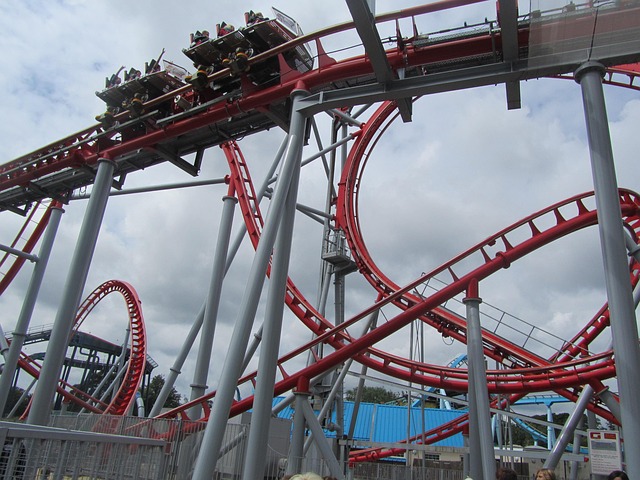The img world ticket price is shaped by a complex interplay of factors, including regional sport popularity, local economics, event location, and attendance history. This dynamic pricing strategy aligns with market demand, offering higher costs in bustling cities like New York or London and more affordable options in smaller towns. Seasonal ticket prices fluctuate based on event popularity and capacity, with peak season events typically pricier due to scarcity. Fans can strategically choose tickets by understanding these variations, balancing budget and enjoyment across different sports and venues. Technological advancements, consumer trends, and sustainability considerations are transforming the global ticketing market, including dynamic pricing algorithms, AI personalization, digital distribution platforms, and eco-friendly options.
Explore the complex dynamics behind seasonal ticket pricing with our comprehensive guide. From market perspectives to consumer behavior, we dissect the factors driving global ticket costs. Learn how location, demand, and competitive landscapes shape pricing strategies across various sports. This article offers an in-depth analysis, providing insights into the future trends of img world ticket price evolutions and offering a valuable resource for both industry professionals and enthusiastic fans alike.
- Understanding Seasonal Ticket Dynamics: A Market Perspective
- Factors Influencing World Ticket Prices: An Analysis
- The Role of Location and Demand in Pricing Strategies
- Comparative Study: Seasonal Tickets Across Different Sports
- Consumer Behavior and Its Impact on Ticket Cost
- Future Trends: Predicting Global Ticket Pricing Evolutions
Understanding Seasonal Ticket Dynamics: A Market Perspective

The dynamics of seasonal ticket prices are a fascinating aspect of the sports and entertainment industry, offering unique insights from a market perspective. In the img world of ticketing, various factors influence the pricing strategy for seasonal tickets, creating a complex interplay between supply and demand. This is particularly evident during peak seasons when events are in high demand, leading to potential price fluctuations.
Understanding these dynamics requires a holistic view. Seasonal ticket prices are not solely determined by the event organizer but are shaped by market forces. Factors such as attendance history, local competition, economic trends, and even weather patterns can impact pricing strategies. For instance, a consistently sold-out stadium during football seasons might command higher prices for its seasonal tickets compared to a venue with sporadic attendances. This market-driven approach ensures that prices reflect the perceived value of the experience, fostering a balanced ecosystem where fans and organizers alike benefit.
Factors Influencing World Ticket Prices: An Analysis

The world of sports ticketing is a complex ecosystem, and several factors influence the seasonal ticket prices that fans encounter. When analyzing global ticket pricing, it’s essential to consider both demand and supply dynamics. Factors such as the popularity of the sport in different regions, stadium capacity, team performance, and local economic conditions all play significant roles. For instance, img world ticket price variations can be attributed to these elements; a highly anticipated match in a popular sport like soccer (or football) could see prices skyrocket due to high demand.
Additionally, the location of the event matters. Major cities with bustling sports cultures may command higher prices for tickets, whereas smaller towns might offer more affordable options. Team history and recent success also impact pricing; established franchises with dedicated fan bases often charge premium rates. Furthermore, amenities and experiences offered at the stadium can enhance or diminish ticket costs. Modern venues with top-notch facilities may justify higher prices, while more traditional stadiums could provide a more economical experience.
The Role of Location and Demand in Pricing Strategies

The pricing strategies for seasonal tickets are intricately tied to both location and demand. The img world ticket price can vary significantly based on where the event is held and how many people are expected to attend. For instance, a concert in a bustling metropolis like New York City or London might command higher prices due to the high cost of living and intense competition for events. In contrast, a smaller, quieter venue in a rural area may offer more affordable tickets, catering to local demand.
Demand also plays a crucial role. Popular events with limited capacity, such as sold-out concerts or sporting events during peak seasons, will naturally have higher ticket prices. This is because the scarcity of tickets drives up their value. Conversely, less popular events or those held during off-peak seasons may offer discounts to lure in attendees, thereby adjusting prices based on market demand.
Comparative Study: Seasonal Tickets Across Different Sports

In the competitive sports landscape, understanding seasonal ticket prices is essential for fans looking to maximize their viewing experience while managing their budgets. A comparative study across different sports reveals varying cost structures and offerings. For instance, img world ticket prices for major sporting events like soccer (football) tend to be more affordable than those for popular North American sports such as basketball or American football. This is often reflected in the overall attendance figures and fan engagement levels during matches.
By analyzing seasonal ticket packages, fans can make informed decisions based on value for money. While some leagues offer comprehensive deals with discounted prices for multiple games, others may charge premium rates for exclusivity and access to exclusive events. Understanding these variations allows sports enthusiasts to choose tickets that align with their preferences and financial capabilities, ensuring they get the most out of their investment in live sporting events.
Consumer Behavior and Its Impact on Ticket Cost

Consumer behavior plays a significant role in determining seasonal ticket prices for events and sports games. In today’s market, fans are increasingly conscious of value for money, leading event organizers to adapt their pricing strategies accordingly. Many consumers use price comparison tools when purchasing tickets, especially for popular events where scalpers often drive up costs. This shift in behavior has prompted organizers to offer various ticket types, such as early bird discounts and multi-game packages, to attract customers and manage demand.
By understanding consumer trends, event planners can make informed decisions about pricing. For instance, dynamic pricing, which adjusts ticket costs based on demand, is becoming more prevalent. This strategy ensures that during high-demand periods, prices reflect the increased interest while offering better deals when attendance is lower. This approach caters to price-conscious consumers and provides organizers with a sustainable revenue model, creating a harmonious relationship between event accessibility and financial viability.
Future Trends: Predicting Global Ticket Pricing Evolutions

The global ticketing market is an ever-evolving landscape, and seasonal ticket pricing plays a pivotal role in shaping fan experiences worldwide. As we peer into the future, several trends emerge that are poised to influence img world ticket price dynamics. Technological advancements, such as dynamic pricing algorithms, will enable more precise gauging of demand, leading to optimized pricing strategies. Personalization will also come to the forefront, with AI-driven recommendations catering to individual preferences and budget constraints.
Furthermore, the rise of digital distribution platforms is expected to disrupt traditional ticketing models. These platforms not only offer convenience but also provide opportunities for dynamic pricing based on real-time market forces. Sustainability remains a key focus, with eco-conscious consumers potentially influencing ticket pricing through their choices—preferring, for instance, electronic tickets over paper ones or attending events with reduced environmental footprints.
In exploring the complex dynamics of seasonal ticket prices, this article has delved into various market forces shaping global ticketing strategies. From understanding consumer behavior to analyzing location-based demand, it’s evident that the world ticket price is a multifaceted variable. As we look ahead, predicting future trends suggests an evolving landscape where technology and shifting fan preferences will continue to drive changes in how fans access live events. By staying attuned to these shifts, sports organizations and ticketing providers can create more inclusive and engaging experiences while navigating the ever-changing img world ticket price ecosystem.
